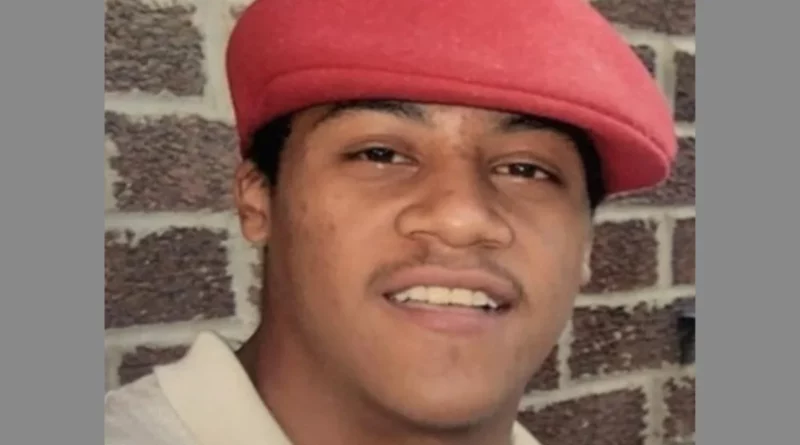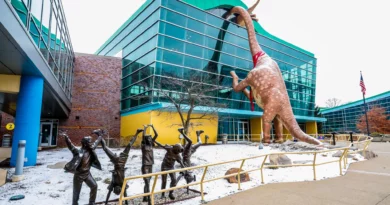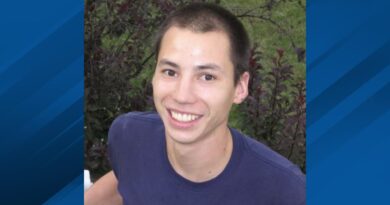The Disappearance and Death of Alonzo Brooks in La Cygne Kansas
The mysterious disappearance and tragic death of Alonzo Brooks have left a lasting impact on the small communities of La Cygne and Gardner, Kansas. Brooks, a 23-year-old man of mixed-race heritage, went missing on April 3, 2004, after attending a party in La Cygne. His death remains unsolved, leaving behind a trail of unanswered questions, racial tensions, and a family’s enduring quest for justice. This article explores the details of that night, the search for Brooks, and the ongoing investigation into his untimely death.
A Night of Celebration Turns Tragic
On April 3, 2004, Alonzo Brooks attended a party in La Cygne, a small rural town in Kansas. Brooks, who lived in Gardner, Kansas, traveled nearly 50 miles with friends to attend the gathering, which included a mix of local residents and unfamiliar faces. The night started off like any other party, with music, drinks, and conversations. Yet, as the evening unfolded, tensions simmered beneath the surface.
At the party, racial slurs were allegedly directed at Brooks. Witnesses later reported that these comments created a tense atmosphere. Brooks was one of the few non-white attendees at the party, making him stand out among the predominantly white crowd. Though he was known for his friendly demeanor, it appeared that he faced hostility that night, possibly setting the stage for what was to come.
A Misunderstanding Leaves Brooks Stranded
As the night went on, Brooks’s friends left the party, each assuming that someone else would take responsibility for giving him a ride back to Gardner. This tragic misunderstanding left Brooks behind without transportation. By the time his friends realized he hadn’t made it home, it was already the next morning, and there was no sign of Brooks.
Concern turned to worry as his friends and family tried to contact him, only to find that he hadn’t returned to Gardner. With no leads on his whereabouts, his loved ones began to fear the worst, and the authorities were notified of his disappearance.
The Search for Alonzo Brooks
Immediately after Brooks was reported missing, a search began involving both law enforcement and members of the community. The Linn County Sheriff’s Office and the Kansas Bureau of Investigation (KBI) joined the search efforts, scouring the area near the farmhouse where the party took place. The search parties combed through fields, wooded areas, and the banks of the nearby creek, hoping to find any trace of Brooks.
Despite the extensive efforts, days turned into weeks with no sign of the young man. The uncertainty weighed heavily on Brooks’s family, who had traveled to La Cygne to assist in the search. As each day passed without answers, the hope of finding Brooks alive began to fade.
The Shocking Discovery
Nearly a month after Brooks’s disappearance, on May 1, 2004, his body was discovered in a creek near the property where the party had been held. The location of the body puzzled authorities and searchers alike, as the area had been searched multiple times before with no results. This raised questions about whether Brooks’s body had been moved or concealed before being placed in the creek.
The discovery of his body added a tragic finality to the situation but brought with it more questions than answers. An autopsy conducted shortly after did not reveal a clear cause of death, leaving investigators with no physical evidence to explain what had happened. The lack of injuries and the condition of the remains made it difficult to determine if foul play had occurred.
Racial Tensions and Suspicions of Foul Play
From the outset, Brooks’s family and friends suspected foul play, pointing to the racial tensions present at the party. They believed that the hostile remarks directed toward Brooks might have escalated into a more dangerous situation after he was left behind. The circumstances of his disappearance, combined with the fact that his body was found in an area previously searched, led to deep suspicions.
Witnesses who were at the party provided conflicting statements about what happened that night, making it hard for investigators to piece together a coherent timeline. Some reported seeing Brooks leave the party on foot, while others suggested he might have gotten into an argument. The inconsistencies only fueled further speculation about whether Brooks’s death was an accident or something more sinister.
Challenges in the Investigation
The investigation into Alonzo Brooks’s death faced significant challenges. The remote and rural location of the party made it difficult to gather physical evidence, and the time that had passed before Brooks’s body was discovered further complicated efforts to determine a cause of death. Additionally, some potential witnesses were reluctant to speak with law enforcement, possibly fearing repercussions or trying to distance themselves from the events of that night.
Brooks’s family, meanwhile, continued to pressure authorities to keep the investigation active, refusing to let his case fade into obscurity. They believed that someone in the La Cygne community knew more about what happened that night but was unwilling to come forward. This led to a sense of frustration as years went by without any concrete developments.
The Role of Silence in the Investigation
A significant barrier to identifying suspects has been the reluctance of potential witnesses to come forward. In small towns like La Cygne, there can be social pressures and fears about speaking out, particularly when it involves accusations of a racially motivated crime. Brooks’s family and advocates have repeatedly expressed their frustration with the lack of cooperation from those who might know more about what transpired that night.
This silence has led to theories that those responsible for Brooks’s death might be protected by a culture of secrecy or fear of retaliation. Some believe that the close-knit nature of the community and the potential for backlash may have kept key witnesses from providing information to law enforcement. This environment has made it difficult for investigators to gather enough evidence to formally charge anyone with Brooks’s death.
The FBI Reopens the Case
In 2020, the Alonzo Brooks case gained renewed attention when it was featured on the Netflix series Unsolved Mysteries. This media exposure brought a wave of public interest, encouraging new tips and leads, and led the FBI to reopen the investigation. The FBI’s renewed involvement brought hope that with modern forensic techniques and new witness testimonies, the truth might finally be uncovered.
One of the most significant developments came in April 2021, when the FBI announced that a second autopsy determined Brooks’s death was indeed a homicide. While the exact cause of death was not disclosed, this autopsy supported the theory that Brooks had been a victim of foul play, possibly at the hands of one or more individuals at the party.
Leads and Theories About Who Might Be Responsible
Although no specific names have been released publicly as suspects, various leads have emerged over the years. Some of these include:
- Party Attendees: Given that Brooks was last seen alive at the party, investigators believe that at least one or more individuals present that night may hold the key to solving the case. The FBI has conducted multiple interviews with attendees in hopes of gathering more information, but so far, no one has been definitively implicated.
- Possible Cover-Up: The idea that someone may have moved Brooks’s body after his death suggests that a cover-up could be involved. This has led to speculation that a small group of people might have been responsible for disposing of his body in the creek after initially hiding it elsewhere. However, without clear evidence, this theory remains speculative.
- Motives Tied to Racial Hostility: The racial tension at the party has always been a central part of the investigation. Brooks’s family believes that his race made him a target, and they suspect that a racially motivated attack could have led to his death. However, proving a racially driven crime has been difficult due to the lack of direct evidence and witness cooperation.
The Search for New Evidence
With the FBI now leading the investigation, efforts have been made to gather fresh evidence that could shed light on the events of April 3, 2004. This includes re-examining physical evidence using modern forensic techniques, reviewing old witness statements, and following up on new tips generated by the media exposure. The FBI has also offered a $100,000 reward for information leading to the arrest and conviction of those responsible, hoping that this financial incentive might encourage someone with knowledge of the crime to speak out.
Frustrations and the Ongoing Quest for Justice
The inability to identify specific suspects has been deeply frustrating for Brooks’s family and supporters, who have fought for nearly two decades to find answers. They have held vigils, marches, and public campaigns to keep the case in the spotlight, determined to prevent Alonzo’s death from becoming just another cold case. Despite the progress made by the FBI, the community’s silence has kept the investigation at a standstill.
Some community members have shared their belief that the truth may never come to light without significant new evidence or a breakthrough confession. Yet, others hold out hope that with the heightened attention on the case, someone might finally decide to come forward and reveal what they know.
Community Response and Support
Throughout the investigation, Brooks’s family received support from both Gardner and La Cygne residents who wanted to see justice served. They organized vigils, marches, and fundraisers to keep the case in the public eye. Civil rights groups and local activists also joined in, calling for transparency and a thorough investigation.
The resurgence of interest in the case highlighted the broader issues of racial tensions and accountability in small communities. For many, Alonzo Brooks’s story was not just a tragic event but a reflection of systemic issues that needed to be addressed.
A Case That Remains Shrouded in Mystery
The lack of definitive suspects in the Alonzo Brooks case highlights the complex and often frustrating nature of investigating long-standing cold cases. Even with federal resources and modern technology, the absence of cooperative witnesses has made it nearly impossible to piece together the full story of what happened that night.
Theories about what might have happened to Alonzo Brooks continue to circulate, ranging from accidental death to racially motivated murder, but without a clear confession or direct evidence, these theories remain speculative. For Brooks’s family, the hope remains that one day the silence will break, and the true story of what happened to their beloved son and brother will finally emerge.
The Impact on La Cygne and Gardner
The disappearance and death of Alonzo Brooks deeply affected the communities of La Cygne and Gardner. His case shone a light on underlying racial tensions in the area and forced many to confront uncomfortable truths about race and justice. The case also exposed the challenges rural law enforcement faces in solving complex crimes, particularly those with social and racial undertones.
Alonzo Brooks: Remembering a Life Cut Short
For those who knew him, Alonzo Brooks was more than a victim of a tragic mystery. He was a brother, a son, and a friend with a warm smile and a gentle nature. His family remembers him as a joyful spirit who loved playing football, hanging out with friends, and making others laugh. While his life was cut short, his legacy endures through the tireless fight for justice led by his family and supporters.
A Search for Justice That Continues
Nearly two decades after his death, the search for justice for Alonzo Brooks continues. With the FBI investigation still open and the possibility of new evidence coming to light, his family remains hopeful that the truth will one day be uncovered. They believe that bringing those responsible to justice will not only honor Alonzo’s memory but also help ensure that no other family has to endure the pain and uncertainty they have faced.
A Case That Won’t Be Forgotten
Alonzo Brooks’s disappearance and death may have begun as a local tragedy, but it has grown into a symbol of the enduring fight for justice. The questions that remain, the tensions that were exposed, and the community’s response have ensured that this case will not be forgotten. As the investigation continues, one hope persists: that the truth will emerge, and Alonzo Brooks’s story will finally find the closure it so desperately deserves.
Discover more from City Towner
Subscribe to get the latest posts sent to your email.




